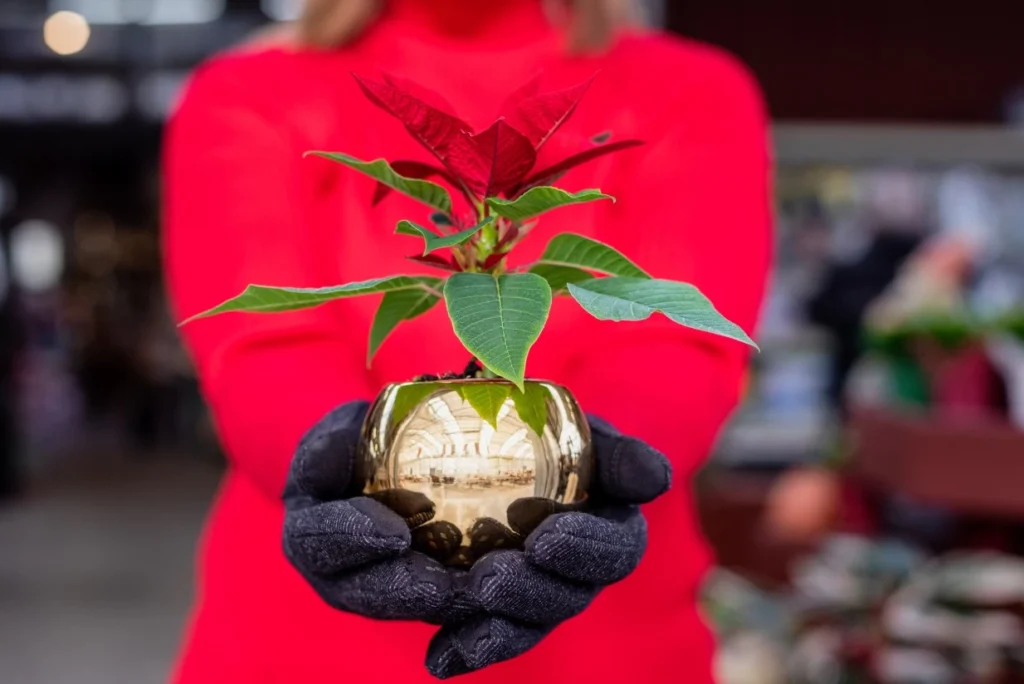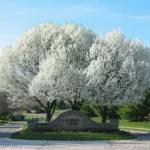Growing a poinsettia tree is more than a seasonal tradition—it’s a testament to patience, care, and a genuine love for nurturing beauty at home. While most of us are familiar with the poinsettia as a holiday potted plant with crimson-tipped bracts, many don’t realize that—given the right conditions—this beloved plant can be grown into a graceful tree that lives year-round, bringing elegance and color into our homes or gardens. Whether it’s part of a sunlit corner in your living room or planted outdoors in frost-free zones, the poinsettia tree can become a charming statement piece unlike any other.
What Is a Poinsettia Tree?
A poinsettia tree is not a separate species from the traditional euphorbia pulcherrima often seen around Christmas. Instead, it’s simply a poinsettia trained and pruned over time to grow as a small tree or standard—typically 3 to 10 feet tall, depending on climate and care. Its signature colored bracts often resemble bright red leaves, but they’re actually modified leaves. The real flowers are the tiny yellow parts at the center, called cyathia.
Transitioning from a bushy nursery plant to a tree-like form takes intention, but the reward is a graceful, eye-catching specimen that brings color and joy well beyond the holiday season.
Choosing the Right Variety and Location
Selecting a healthy plant to begin with is critical. Choose a poinsettia with:
- Dark green leaves, not wilted or yellowing
- Firm stems with no signs of breakage
- No white powder (which may indicate mildew)
- A clear center cyathia, meaning it’s early in its blooming cycle
If you intend to grow your poinsettia as a tree, you’ll need a variety that can reach heights of at least 3 feet. Varieties like Prestige Red, Christmas Beauty, and Jingle Bells are dependable and beautiful when grown taller.
For outdoor growing, USDA zones 9 to 11 are suitable. In cooler regions, poinsettia trees need to stay indoors during cold months. A warm, sunny window with at least six hours of bright, indirect light per day creates the ideal environment indoors. Outdoors, choose a spot with morning sun and afternoon shade to prevent scorching.
Planting and Soil Conditions
Poinsettias prefer well-draining, slightly acidic soil. When potting, use a mix designed for houseplants, incorporating perlite or sand to ensure proper aeration. If planting directly into a garden bed, amend soil with compost and organic matter.
Key soil features to aim for:
- pH level between 5.5 to 6.5
- Light and crumbly texture
- Excellent drainage to avoid root rot
- Rich in organic nutrients, similar to what’s recommended for other plants like figs or bougainvilleas
Always ensure containers have drainage holes and avoid decorative pots without proper ventilation.
Training a Poinsettia into Tree Form
Turning a regular poinsettia into a tree requires pruning, staking, and time. Begin when the plant is young and actively growing.
Steps to train your poinsettia as a tree:
- Select the strongest central stem and remove all other branches growing from the base. This will become your main trunk.
- Stake the central stem with a bamboo stick or rod to help it grow straight. Continue tying it gently as the plant grows taller.
- Pinch off side shoots along the main stem regularly. Leave only the top cluster of leaves; future growth will branch from there.
- Once your tree reaches desired height (typically 3 to 4 feet indoors), begin pinching the top to encourage canopy branching.
This shaping process typically takes 1 to 2 growing seasons. Patience is very much a part of the craft—give your tree time, care, and attention.
Watering and Fertilization
Watering needs depend on temperature, location, and maturity of the plant. While poinsettias enjoy moisture, overwatering is a common mistake. Aim for consistency without saturation.
Tips for watering:
- Allow the soil to dry out slightly between waterings
- Use room-temperature water to avoid shocking roots
- In containers, always empty the saucer under the pot after watering
Fertilizing helps maintain robust growth and vivid foliage. Apply a balanced, slow-release fertilizer once a month during the growing season (spring through early fall). In the active bloom period, switch to a fertilizer higher in phosphorus to encourage floral development.
Light and Temperature Needs
To thrive, poinsettia trees demand a balance of bright light and warmth. Indoors, set them in east- or south-facing windows. Outdoors, mornings are ideal for direct sun, with shelter from intense afternoon heat.
Essential conditions include:
- Temperatures between 65°F–75°F during the day
- No exposure to frost
- No drastic temperature changes
- Protection against cold drafts; poinsettias do not handle stress well
During autumn, reducing light exposure mimics seasonal cue for blooming. Natural blooming begins when nights exceed 14 hours of uninterrupted darkness for 6–8 weeks, which stimulates color change in bracts.
Covering the plant or placing it in a dark closet during evenings can help replicate this cycle indoors.
Pruning and Maintenance
Regular pruning not only shapes your poinsettia tree but maintains its health. After the blooming season, around late winter or early spring, prune back the top growth by one-third.
Ongoing pruning includes:
- Removing dead or leggy branches
- Thinning dense areas to allow airflow
- Pinching new shoot tips to maintain fullness
Clean shears with rubbing alcohol before each pruning session to prevent disease spread. Don’t discard healthy cuttings—poinsettias are easily propagated. You can create new plants from trimmings or share the holiday joy with neighbors.
Common Problems and Solutions
Like many indoor and warm-climate plants, poinsettias have their challenges. Knowing what to watch helps prevent lasting damage.
Issues you may encounter:
- Yellowing leaves – Often a sign of overwatering or poor light
- Leaf drop – Drafts, cold temperatures, or abrupt light changes are common culprits
- Whiteflies – These tiny pests feed on sap. Use neem oil or insecticidal soap to treat infestations promptly
- Powdery mildew – Increase airflow, avoid wetting foliage, and treat with fungicidal sprays approved for edibles
Healthy poinsettias are more resilient. Clear, consistent care reduces stress and risk of pests or rot.
Decorating with a Poinsettia Tree
A poinsettia tree isn’t just another plant—it’s a living decoration that brings joy throughout the seasons. Many keep them near entryways, fireplaces, or as part of a year-round indoor garden design.
Ideas to feature your poinsettia tree:
- Surround the base with small white flowers or trailing ivy for texture
- Pair beside tall indoor plants for contrast and structure
- Use as a centerpiece on the patio during warm months
- Incorporate with climbing flowers in garden beds for vertical interest
Avoid overcrowding the base with decorations or lights that trap moisture. Let the natural beauty and color radiate.
Seasonal Re-Blooming Strategy
People often discard poinsettias after winter cheer fades. With the right re-blooming strategy, your plant can come back in vibrant color year after year.
Steps to encourage reblooming:
- After flowering, in late winter, prune and reduce watering.
- In spring, resume regular watering and move to a sunny location.
- Fertilize monthly and allow it to regrow.
- Come September or October, begin placing the plant in complete darkness for 14 hours each night while allowing bright light during the day.
- Continue this light regime until mid-November, then keep in normal conditions—it should begin showing colored bracts soon.
Re-blooming a poinsettia tree naturally brings pride, especially for those who connect with their plants through care and tradition.
Encouraging Long-Term Growth and Companionship
A poinsettia tree offers more than visual delight—it becomes part of your home’s story. Like a favorite piece of furniture or an heirloom decoration, it flourishes as you nourish it over time. As someone who still cherishes the first plant I coaxed into red bloom 10 years ago, I can tell you—it’s worth every moment of care.
For gardeners looking to diversify their experience, consider pairing your poinsettia with other charming additions like succulents, plum blossoms, or even a jasmine garden. These companions create layered beauty while keeping your green thumb happily engaged.
Tending to a poinsettia tree isn’t always easy, but it is comforting, rewarding, and often therapeutic. For those of us who love our homes filled with meaningful, well-loved pieces, few plants carry such warmth and tradition.
Let your poinsettia grow not just as a plant, but as a living memory in your home.



